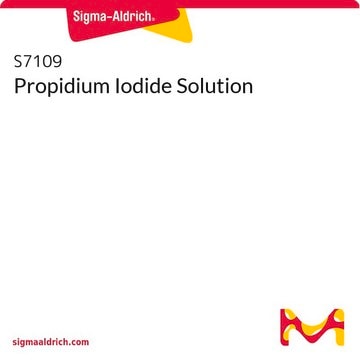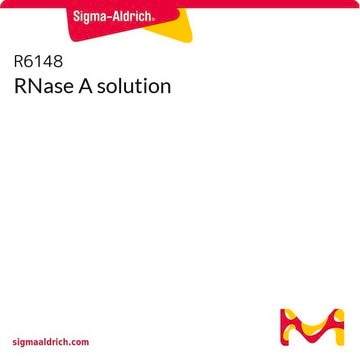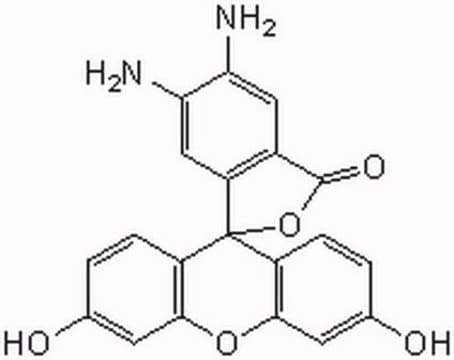81845
Propidium iodide
≥94% (HPLC)
Synonym(s):
3,8-Diamino-5-[3-(diethylmethylammonio)propyl]-6-phenylphenanthridinium diiodide
About This Item
Recommended Products
Quality Level
Assay
≥94% (HPLC)
form
powder
mp
220-225 °C (dec.) (lit.)
fluorescence
λex 482 nm; λem 608 nm (pH 7.2)
λex 540 nm; λem 608 nm (bound to DNA)
storage temp.
2-8°C
SMILES string
[I-].[I-].CC[N+](C)(CC)CCC[n+]1c(-c2ccccc2)c3cc(N)ccc3c4ccc(N)cc14
InChI
1S/C27H33N4.2HI/c1-4-31(3,5-2)17-9-16-30-26-19-22(29)13-15-24(26)23-14-12-21(28)18-25(23)27(30)20-10-7-6-8-11-20;;/h6-8,10-15,18-19,29H,4-5,9,16-17,28H2,1-3H3;2*1H/q+1;;/p-1
InChI key
XJMOSONTPMZWPB-UHFFFAOYSA-M
Looking for similar products? Visit Product Comparison Guide
General description
Application
- to stain DNA in cell cycle analysis
- to stain cells and cell nuclei
- for the preparation of propidium iodide (PI)stock solution
- to stain cells for flow cytometry
Features and Benefits
Packaging
Signal Word
Warning
Hazard Statements
Precautionary Statements
Hazard Classifications
Muta. 2
Storage Class Code
11 - Combustible Solids
WGK
WGK 3
Flash Point(F)
Not applicable
Flash Point(C)
Not applicable
Personal Protective Equipment
Choose from one of the most recent versions:
Already Own This Product?
Find documentation for the products that you have recently purchased in the Document Library.
Customers Also Viewed
Articles
Apoptosis regulation involves multiple pathways and molecules for cellular homeostasis.
Apoptosis regulation involves multiple pathways and molecules for cellular homeostasis.
Apoptosis regulation involves multiple pathways and molecules for cellular homeostasis.
Apoptosis regulation involves multiple pathways and molecules for cellular homeostasis.
Related Content
Three-dimensional (3D) printing of biological tissue is rapidly becoming an integral part of tissue engineering.
Three-dimensional (3D) printing of biological tissue is rapidly becoming an integral part of tissue engineering.
Three-dimensional (3D) printing of biological tissue is rapidly becoming an integral part of tissue engineering.
Three-dimensional (3D) printing of biological tissue is rapidly becoming an integral part of tissue engineering.
Our team of scientists has experience in all areas of research including Life Science, Material Science, Chemical Synthesis, Chromatography, Analytical and many others.
Contact Technical Service










